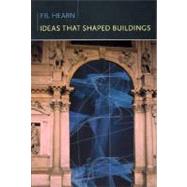Ideas That Shaped Buildings

Ideas That Shaped Buildings
- ISBN 13:
9780262582278
- ISBN 10:
0262582279
- Format: Paperback
- Copyright: 10/10/2003
- Publisher: The MIT Press
New From $19.25
Sorry, this item is currently unavailable.
List Price $19.95 Save $0.70
New
$19.25
Usually Ships in 3-5 Business Days
We Buy This Book Back!
Included with your book
Free Shipping On Every Order
Note: Supplemental materials are not guaranteed with Rental or Used book purchases.
Extend or Purchase Your Rental at Any Time
Need to keep your rental past your due date? At any time before your due date you can extend or purchase your rental through your account.
Summary
Silver Award Winner for Architecture in the 2003 ForeWord Magazine Book of the Year Awards In Ideas That Shaped Buildings, Fil Hearn identifies and codifies into theoretical systems the operative tenets of architectural theory from ancient Rome to the present. With this strikingly original synthesis of architectural history and theory, he constructs an intellectual armature on which virtually any architectural concept, past or present, can be positioned. Dealing mainly with the treatises that have been highly influential historically, he organizes their concepts thematically and analyzes their development through time. Straightforward and concise, Ideas That Shaped Buildingsis readily accessible to architecture students, practicing architects, and the general public-indeed anyone interested in understanding the design rationale of buildings. Its overarching message is that, far from being constricting, proper knowledge and application of architectural theory is enabling and inspiring, and makes creative freedom possible by providing the conceptual awareness needed to devise a design. After an introductory history of the development of architectural theory, the text is divided into four parts. The first deals with issues relevant to all theories of architecture. The second, treating theory from antiquity to 1800, focuses on the prescriptive conventions inherent in the classical tradition. The third, treating theory after 1800, focuses on the inspirational principles prompted by rationalist perceptions of the Gothic tradition. The fourth, treating theory since 1965, deals with rationales beyond rationalism and the influence of computers on design method and design formulation. The concepts discussed are illustrated with theoretical drawings and images of actual buildings.






